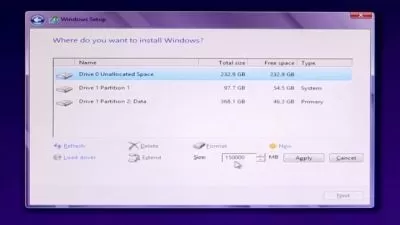Learn Framework for absolutely begineers
1:14:21
Description
Learn the basics of Framework and learn how to use various tools
What You'll Learn?
- Learn basics of Ansible with examples
- Learn static code analysis
- Learn how to install plugins
- Learn advanced project tools
Who is this for?
What You Need to Know?
More details
DescriptionAnsible is an open-source automation tool used for configuration management, application deployment, and task automation. It simplifies IT operations by allowing administrators to automate repetitive tasks and streamline workflows. Unlike other configuration management tools, Ansible is agentless, meaning it doesn’t require any software to be installed on managed nodes. It uses SSH for communication, which ensures security and ease of use.
Ansible uses a simple, declarative language called YAML (Yet Another Markup Language) to define automation tasks in playbooks. Playbooks are files containing a series of tasks that are executed sequentially. Each task is a module (a unit of work like installing a package, managing a service, or copying files). The idempotency of these modules ensures that executing the playbook multiple times results in the same configuration without side effects.
Ansible’s simplicity, agentless architecture, and use of YAML make it a powerful tool for IT automation. Its modular nature allows for flexibility and scalability, making it a popular choice for DevOps and infrastructure management. Each task in a playbook is executed in order, and the system’s state is checked to ensure compliance with the defined configuration. Ansible’s idempotency ensures that a task will only make changes if the system is not already in the desired state, preventing unintended consequences from re-running the same tasks.
Who this course is for:
- Software developers
Ansible is an open-source automation tool used for configuration management, application deployment, and task automation. It simplifies IT operations by allowing administrators to automate repetitive tasks and streamline workflows. Unlike other configuration management tools, Ansible is agentless, meaning it doesn’t require any software to be installed on managed nodes. It uses SSH for communication, which ensures security and ease of use.
Ansible uses a simple, declarative language called YAML (Yet Another Markup Language) to define automation tasks in playbooks. Playbooks are files containing a series of tasks that are executed sequentially. Each task is a module (a unit of work like installing a package, managing a service, or copying files). The idempotency of these modules ensures that executing the playbook multiple times results in the same configuration without side effects.
Ansible’s simplicity, agentless architecture, and use of YAML make it a powerful tool for IT automation. Its modular nature allows for flexibility and scalability, making it a popular choice for DevOps and infrastructure management. Each task in a playbook is executed in order, and the system’s state is checked to ensure compliance with the defined configuration. Ansible’s idempotency ensures that a task will only make changes if the system is not already in the desired state, preventing unintended consequences from re-running the same tasks.
Who this course is for:
- Software developers
User Reviews
Rating

Udemy
View courses Udemy- language english
- Training sessions 8
- duration 1:14:21
- Release Date 2025/01/24








